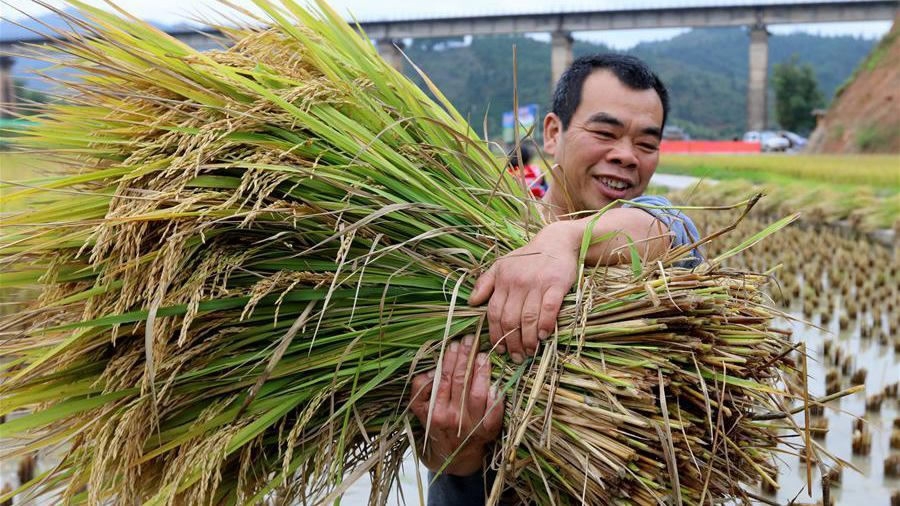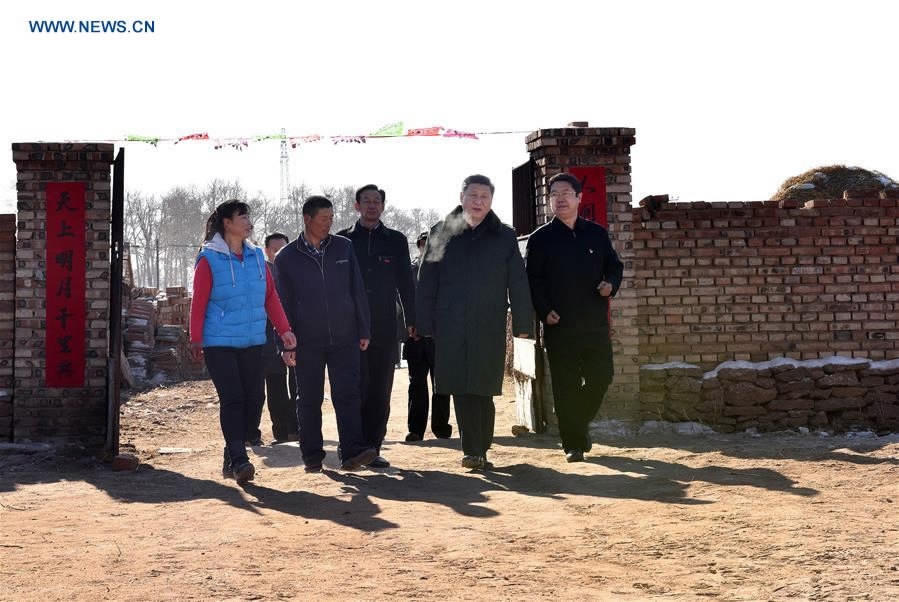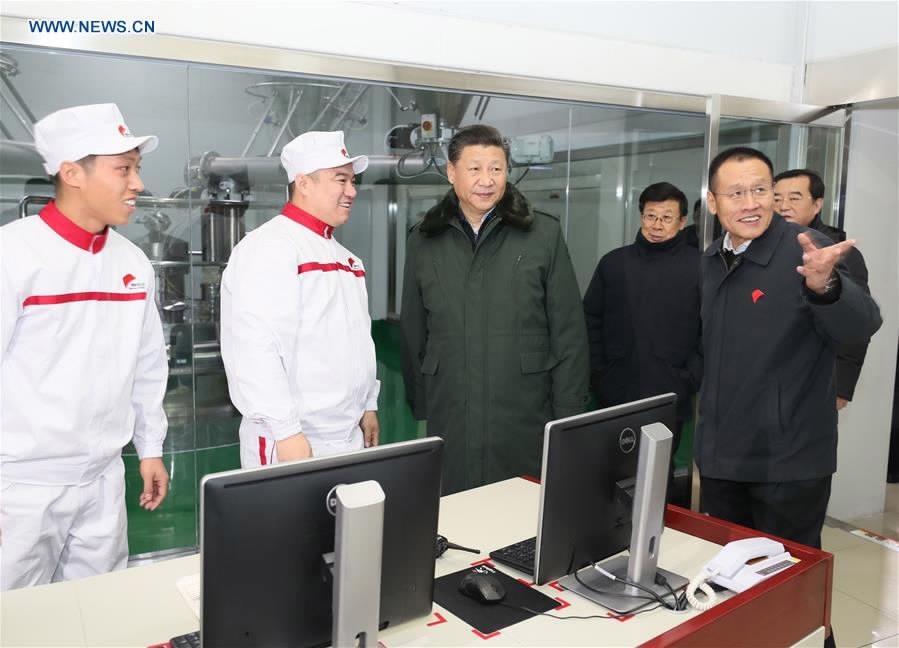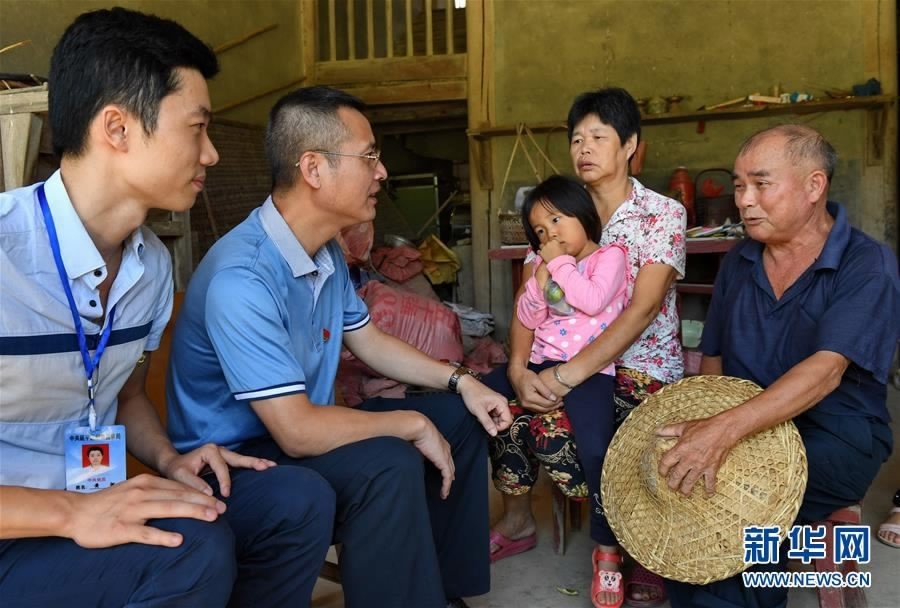
Opinions
16:15, 22-Oct-2017
Opinion: Small details help millions out of poverty
Guest commentary by Shuriah Niazi

China has made tremendous strides in poverty alleviation in rural areas over the past five years by carrying out targeted and precise measures, and through social and economic development in poverty-hit areas. In 2016, nearly 12.4 million people shook off poverty and achieved prosperity.
With poverty reduction high on its agenda, the government aims to help 10 million people out of poverty every year. Industries and enterprises that utilize local resources as well as tap the potential of particular areas have been set up ensuring employment for jobless villagers and generating income.

Chinese President Xi Jinping visits the home of villager Xu Xuehai in Desheng Village, Xiaoertai Township of Zhangbei County in north China's Hebei Province, January 24, 2017. /Xinhua Photo
Chinese President Xi Jinping visits the home of villager Xu Xuehai in Desheng Village, Xiaoertai Township of Zhangbei County in north China's Hebei Province, January 24, 2017. /Xinhua Photo
The introduction of the olive factory in Gansu Province and a tourism project in the Dulong Mountain Valley are excellent examples of how targeted efforts can pull people out of mud.
In Longnan, northwest China's Gansu Province, many villagers work at a local olive factory. The locals grow olives, but in the past they had to throw them away as it was difficult to market.

Chinese President Xi Jinping inspects a dairy company in Zhangjiakou City of north China's Hebei Province, on January 24, 2017. /Xinhua Photo
Chinese President Xi Jinping inspects a dairy company in Zhangjiakou City of north China's Hebei Province, on January 24, 2017. /Xinhua Photo
They didn’t know that the olives must be squeezed in the first eight hours to obtain the best quality of olive oil. But the authorities set up a local factory that now purchases olives from villagers for oil refinery. There has been a marked increase in the income of the villagers. The factory also purchases walnuts from villagers and the local government has earmarked funds for the development of the industry.
Local agriculture industries like this one have created job opportunities and brought changes to the lives of previously poverty-stricken people. The government has set up industries that make the most of the local resources and they have yielded positive results, playing a pivotal role in increasing household incomes.

Officials who led the poverty-relief work visit a resident's house in Nanping City, Fujian Province, September 14, 2017. /Xinhua Photo
Officials who led the poverty-relief work visit a resident's house in Nanping City, Fujian Province, September 14, 2017. /Xinhua Photo
Similarly, a tourist project in Dulong Mountain Valley in China’s southwest is another example of how area-specific projects have relieved the suffering of impoverished people. A tourism project ideally suited the conditions of the high altitude mountainous region as the area remains snowbound and unapproachable for months and therefore is inappropriate for almost any other type of enterprise. But the local government tapped the tourism potential of natural landscape that harbors rare and magnificent wildlife for the benefit of the local population.
In the last three decades, China has ended extreme poverty for nearly 800 million people. Former UN Secretary-General Ban Ki-moon once highly praised China’s progress in the fight against poverty. In 2015 Chinese President Xi Jinping vowed to go further, promising to end all poverty in the country by 2020.

Villagers prepare wood to construct new houses in Fanyang township of Wuzhishan, south China's Hainan Province, May 1, 2017. /Xinhua Photo
Villagers prepare wood to construct new houses in Fanyang township of Wuzhishan, south China's Hainan Province, May 1, 2017. /Xinhua Photo
China’s achievements in the field of poverty alleviation are inspiring. The country’s economy has been growing fast but with it the inequality is also widening. Therefore, lifting the next 10 million people out of poverty will be harder than lifting the previous 100 million. When poverty within a country falls, it is more challenging to reach the fewer left-behind poor and therefore progress to the next stage of poverty alleviation is likely to be slower.
A major challenge before the government now is to not only to maintain the economic growth but also ensure that it does not exacerbate inequality and any benefits are distributed equally. The government will have to reach the areas that are yet to receive benefit from poverty reduction measures. But China possesses the capacity, policies and the ability to maintain the tempo of its efforts against poverty.
(The author is an award winning journalist based in India with experience in covering environment, health, political, business, religious and social issues. He works on a broad spectrum of issues for a variety of media outlets, but specializes in political, social, environmental and health issues especially women related. The article reflects the author's opinion, and not necessarily the views of CGTN.)

SITEMAP
Copyright © 2018 CGTN. Beijing ICP prepared NO.16065310-3
Copyright © 2018 CGTN. Beijing ICP prepared NO.16065310-3